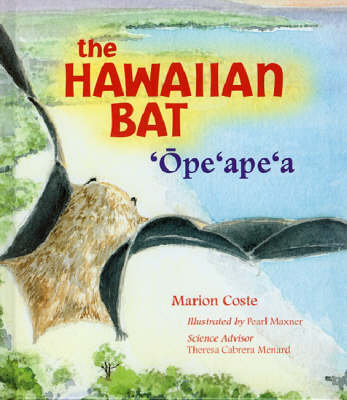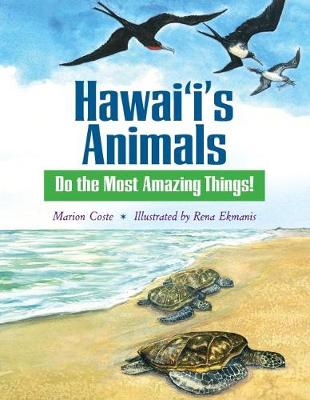Latitude 20 Book
2 total works
Shy and solitary, the Hawaiian hoary bat is so rare that most people have never seen one. But if you are in the right place (the edge of a forest) at the right time (around sunset), you may be lucky enough to catch a glimpse of one heading out to hunt for beetles and moths, its favorite foods. These and other fascinating details about the Islands' only native land mammal and bats in general can be found in this book. For example, did you know that: One fourth of all mammal species are bats; The phrase ""blind as a bat"" is inaccurate because bats have very good eyesight; Thanks to a special muscle reflex in their legs and feet, bats can hang upside down safely even when asleep; Far from being the frightening creatures of myth and legend, bats actually help humans by scattering seeds and pollen and eating insect pests. The more we know about this mysterious and misunderstood animal, the greater our chances of protecting it and its fragile habitat.
Hawai‘i is like no other place on earth. Raised above the sea by volcanic action, the islands are home to a fascinating array of animals, most of which are found nowhere else in the world.
Because the Hawaiian islands are so isolated—more than 2000 miles from any large land mass—many of its native animals have developed unusual adaptations that help them survive. For example, Hawai‘i has
Hawai‘i is the extinction capital of the United States. Only through education and thoughtful conservation can we prevent the disappearance of any more of Hawai‘i’s unique animals. The first step is to learn about these animals and begin to appreciate their special characteristics.
Because the Hawaiian islands are so isolated—more than 2000 miles from any large land mass—many of its native animals have developed unusual adaptations that help them survive. For example, Hawai‘i has
- whales that sing
- dolphins that spin through the air
- bats that turn somersaults as they feed
- shrimp that climb waterfalls
- killer caterpillars
- a tiny blood-sucking bug that survives on the summit of Mauna Kea
Hawai‘i is the extinction capital of the United States. Only through education and thoughtful conservation can we prevent the disappearance of any more of Hawai‘i’s unique animals. The first step is to learn about these animals and begin to appreciate their special characteristics.

